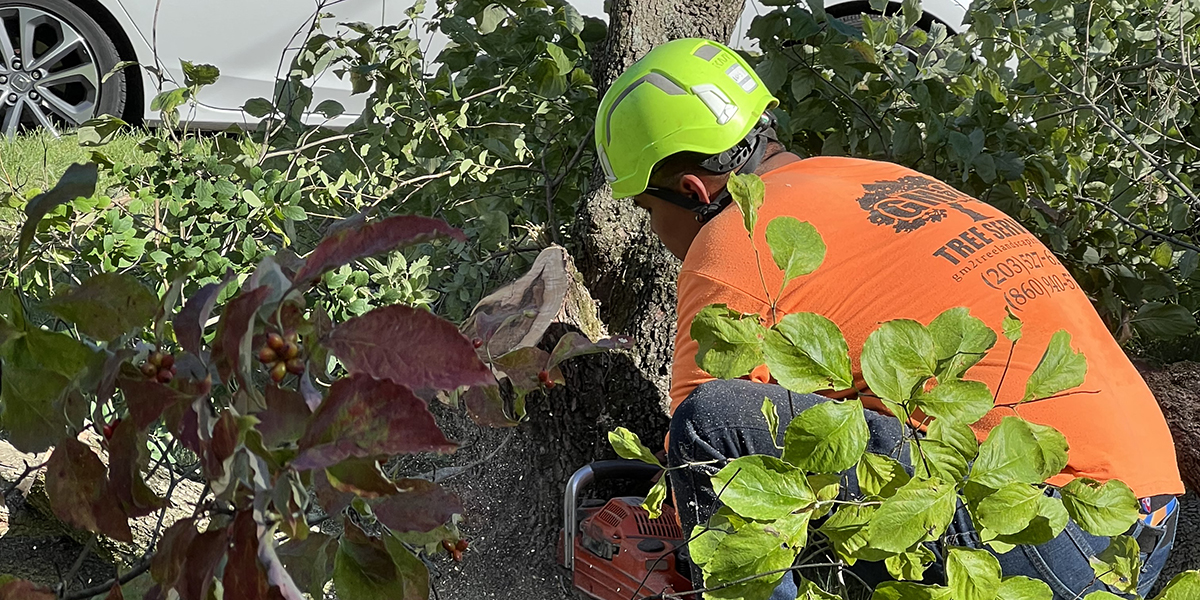
Trees often take several measures to protect themselves when they sustain damage. For example, you may notice small shoots that grow on tree stumps or tree roots after cutting them. These sprouts also go by “sucker growth,” an accurate name for what they can do, especially on healthy, living trees.
Our expert tree service in Bristol can teach you how to stop tree sprouts without killing the tree. After all, some trees are often necessary for your property’s ecosystem, and if they benefit the area, they’re better kept alive.
The Problem With Tree Suckers
When spring comes in, you may see new sprouts sitting along the tree base or coming from elevated roots. While they may look small and pleasant, they can wreak havoc on the tree’s energy reserves.
The problem tree sprouts present comes from their diversion of nutrients and energy. Because of the many sprouts growing on the main body, the parent tree cannot utilize that energy for itself. The suckers take resources away from the more desirable parts of the tree, like the upper branches.
Reasons a Tree May Form Sprouts
While many homeowners generally like to leave the tree to grow alone, they occasionally need assistance. In this case, the sucker growth often occurs from plant issues rather than proper intent:
- Pests
- Droughts
- Diseases
- Tree injuries
- Vascular stressors
The tree may be attempting to grow more branches to recover. However, instead of helping, the tree sprouts hinder the plant’s growth and can shorten its lifespan and resources. This issue can cause fewer healthy fruits to develop in vegetative or fruit trees.
To keep it alive and healthy, you should carefully remove the sprouts from the parent tree. However, doing so haphazardly can cause further stress that increases their growth.
The Do’s and Don’ts of Sucker Growth Removal
The most common methods of sucker removal include pruning and chemical use. With each attempt, you have to monitor the tree’s condition.
Pruning
As you look for how to stop tree sprouts without killing the tree, be vigilant against over-pruning. Over-pruning can prompt more sucker or water sprout growth than before, making the problem worse. As more growths appear on the tree, it becomes more difficult for it to maintain its health.
However, careful pruning can help remove younger sprouts. The best time to remove them is during the tree’s dormant season to keep its system from stress. Leaving the shoots will allow them to propagate further.
You can also remove older suckers, but you must be more careful than with the younger ones. Removing the older suckers could motivate more unwanted growth because of how integrated it has become into the tree. In such cases, try leaving pruning to professionals who can identify and thoroughly remove sprouts and suckers from Connecticut trees.
Chemicals
Other advice might suggest using herbicides on the suckers to kill them while leaving the tree intact. However, separating the sprouts and the parent tree can be incredibly difficult. Using the herbicide on the small suckers could pollute the tree instead.
You could attempt to use formulas made with inhibiting hormones on the suckers to reduce their growth while the parent tree continues growing. Then, when the tree goes into its dormant phase, you could remove the inhibited suckers. However, it likely will not simply fall off on its own.
Don’t Leave Your Tree Sprouts Alone
Sometimes, removing suckers and water sprouts is about choosing the right tree care company. GM2 Tree Service knows how to stop tree sprouts without killing the tree, how to prune and trim trees carefully, and more. Our arborists continuously work hard to provide top-quality tree care in Hartford County.
Call (203) 527-6237 to address detrimental tree sprouts today.
